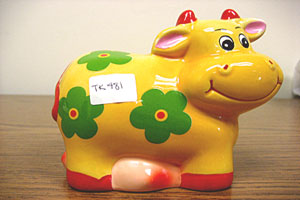The Act not only lowers limits for lead and bans certain kinds of phthalates–it makes manufacturers and distributors accountable for products sold to American consumers by requiring items to be certified by third-party labs. But the testing, or certification piece of the Act, was postponed for a year. That raised a lot of questions for me as a reporter and as a parent.
I contacted the Center for Environmental Health, which researches lead, and other toxics, in consumer items and has sued manufacturers and distributors for violating standards.
CEH and KQED were interested in looking at what’s sold at discount chains and 99 cent stores because of the history of previous recalls. CEH, through its regular spot testing, also thought that many of the larger retail outlets seem to have improved their process to weed out lead in children’s items after the 2007 recalls.
I got some tips from CEH about potentially problematic products to look for. We purchased about 200 items and then CEH did the first round of testing using an X-ray fluorescence (XRF) device. The XRF is a handy tool used by a lot of commercial lead inspectors. It shoots high-energy x-rays at the item and sends back a chemical analysis, including the lead content.
Most items that exceeded the lead limits (600 parts per million) set by the Consumer Product Safety Improvement Act using the XRF device were then sent to a federally-accredited lab, MACS in Hayward, for detailed testing. At the lab, the parts or components that exceeded the lead limits were cut or scraped off and dissolved in an acid solution. Then tests were run to determine the lead content.
So how can parents keep leaded toys away from kids? In addition to avoiding vinyl products, stay away from metal jewelry.
If you can, choose natural wood toys instead of painted items, especially if they are in yellow. Check the recall list posted by the Consumer Product Safety Commission. Many companies sell home lead test kits for consumer products. They’re not 100-percent reliable and can give false negatives-and false positives too. If you’re really concerned about your child’s lead level, the best thing to do is to get a blood lead test.
 Listen to the Playing with Lead – Part 1 radio report online.
Listen to the Playing with Lead – Part 1 radio report online.
37.811106 -122.267318
 The paint on this piggy bank tested for lead at 7253 parts per million (ppm); that is 11 times higher than the legal limit for lead paint. By Oanh Ha, Globalization Reporter for The California Report.
The paint on this piggy bank tested for lead at 7253 parts per million (ppm); that is 11 times higher than the legal limit for lead paint. By Oanh Ha, Globalization Reporter for The California Report.